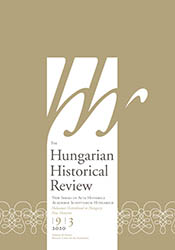Hungarian Holocaust Testimonies in Global Memory Frames: Digital Storytelling about “Change” and “Liberation”
Hungarian Holocaust Testimonies in Global Memory Frames: Digital Storytelling about “Change” and “Liberation”
Author(s): Edit JegesSubject(s): History of the Holocaust
Published by: Magyar Tudományos Akadémia Bölcsészettudományi Kutatóközpont Történettudományi Intézet
Keywords: testimony; framing; East Central Europe; digital storytelling; intersectionality
Summary/Abstract: This article provides a comparative and intersectional analysis of East-Central European Holocaust testimonies by women survivors narrated in writing at the time of the Shoah and recorded five decades later by the USC Shoah Institute’s Visual History Archive. The comparison explores both the continuities and changes particularly in the beginning and end of the persecution, which are usually associated with the terms “occupation” and “liberation.” I suggest that these conceptualizations prominent in the archive collide with survivor testimonies from the region in that survivors do not interpret Hitler’s rise to power and the German occupation as formative events of the persecution against the local Jewry. Further, I provide a typology of liberation narratives arguing for a multiplicity of interpretation based on survivor narratives countering the popular consensus of liberation as a carefree moment in time. Lastly, I conclude that the regional approach is particularly useful in understanding Holocaust memory in Hungary today as it is conducive to highlighting the specific relation of the global to the local.
Journal: The Hungarian historical review : new series of Acta Historica Academiae Scientiarum Hungaricae
- Issue Year: 9/2020
- Issue No: 3
- Page Range: 452-469
- Page Count: 18
- Language: English

